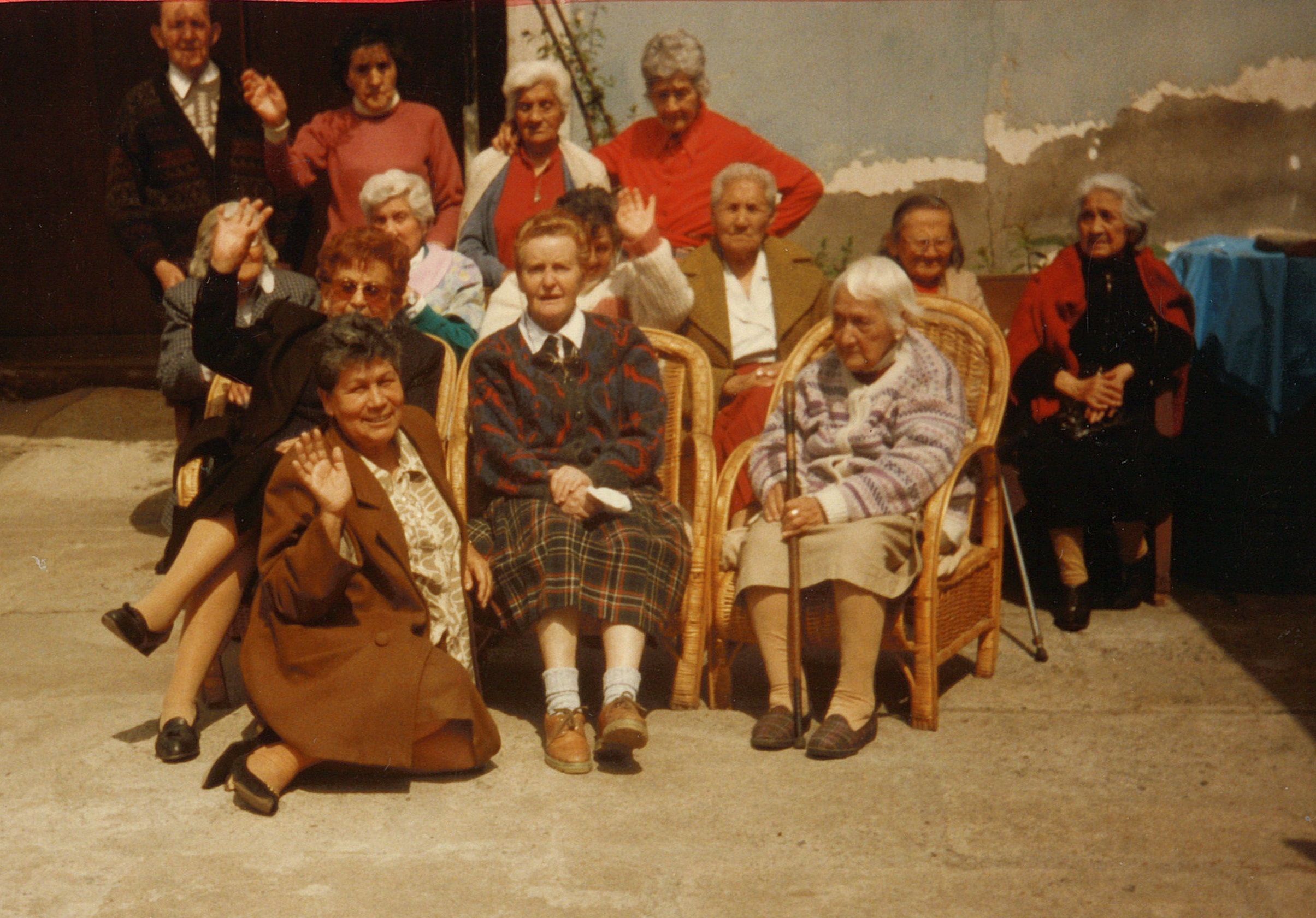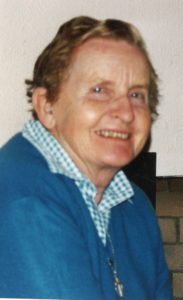A French sister at the service of the elderly poor in Chile

Chantal Berthelin with residents of the El Rosario-Punta home in Tralca
What was her childhood like? How did her vocation appear?
Chantal Berthelin was born on 29th May 1928, in Paris, in a large family (14 brothers and sisters). Her family passed on their faith to her. She was in the scout movement and several members of the family entered religious orders. Her father was an engineer and worked as director of the public services for reconstruction in Brest after the war.
How did she know the LSA? Did she wish to go on mission abroad?
Chantal met the Congregation in Brest: she was living with her parents very close to a community of LSAs. One of them asked Chantal to help her look after children in a family she was working with.
She eventually entered the LSA novitiate in Concarneau in October 1948, when she was 20. She trained to be a family worker in Paris, then was sent to La Rochelle. She took her final vows on 26th April 1957, at Grenelle.
Very soon she expressed her wish to go on mission abroad. This came true soon after, on 14th May 1957, when she left for Argentina. When she first arrived in Buenos Aires, she did not know a single word of Spanish. The day after, she was sent on mission.
Chantal Berthelin – 1982.

Why did she take interest in elderly people?
In September 1957, she arrived in Lota Alto – a mining city in Chile –where the Little Sisters had been called early in 1955 to take care of the large mining families who faced housing problems. She discovered there in the township that the old people were abandoned: their families made them feel that they were another mouth to feed: “For the poor, the hardest thing is not to feel poor, but to feel that one is not accepted in the wide human family”. (Le Cri des Anciens, Chantal Berthelin, 1976)
How to help poor elderly people?
How to make them feel useful and to change how their family and friends – and society – look on them?
Faced with this situation she decided to create (mixed) clubs for the elderly, which did not exist, it was an original project in comparison with the usual mission of the Little Sisters.
She suggested they met once a week to have tea together, talk, do small craft activities and games according to each one’s likes. The first club was created in 1960 in Lota Alto, Chile.
These clubs aim to better integrate the elderly persons in their family and in society.
How were these clubs organized? What were their activities?
Everyone paid a contribution for the cost of the snack, according to his/her means. Chantal said: “I’m reluctant to “give” them things, with some exceptions. Actually, they feel much better when they pay out of their own pocket”. One chairman, one secretary and one treasurer were elected among the club members, for 2 years. The non-disabled persons went to the disabled persons’ house in order to have tea together. “I think that, to listen to someone is an apostolate that relieves the pain and worries – and it is better than giving a pack of biscuits” (The Cri des anciens, 1976).
Some volunteers -mothers or young people – took charge of the organization and animation of the meetings.
Once a week there were discussions around a theme – friendship for instance.
Once a year there were exceptional outings: for example, in October, there was an outing for all the clubs in Santiago. Moreover, each club tries to take the members on holidays, at the seaside which was a nex experience for many.
Each month there was a party for all the members who had their birthday in the month, with songs and dances. Some pilgrimages were organized in the region (there were several grottoes of Lourdes).
A member of these clubs gave her testimony: “we are all very happy now because at last we feel like we are “persons”, we feel like we are “someone”.
What was the development of these clubs?
In 1996, there were more than 50 clubs in Chile. In fact, Chantal estimated that she had founded more that 130 of them in the whole country.
How to take a further step in helping lonely old people?
In 1973, the “Nuestra Señora del Rosario” shelter was built in Santa Adella thanks to a generous donator. It is a nursing home for very poor and often isolated old people which can accomodate 32 people (men and women).
The director is a lay woman assisted by 2 mothers – each of them has a 3-year-old child. They live on site, which brings joy to the residents.
The residents finance their accommodation with their retirement fund and the generosity of some benefactors. The “Christ shelter” – a centre for homeless people – sends some of its residents to this nursing home. In exchange, this shelter gives prefabricated houses.
What was Chantal’s life all over those years?
In 1964 Sr Chantal had a very serious accident and broke her skull, which had after-effects all through her life.
She kept on creating all those clubs and taking care of the nursing home residents despite her serious health problems.
She went to live in the “Nuestra Señora del Rosario” shelter in Santa Adella in 1992 and made everything she could in order to listen to the residents and calm tensions.
She dedicated her Mondays to the sisters of her community. A couple of hours a day, she went to visit the sick and share the Gospel, with the club members.

How did she live her last years?
She left for a nursing home for some time in Uruguay then returned to France in March 2001 and entered the Antoinette Fage nursing home.
The end of her life was difficult. She progressively lost independence, especially her ability to talk. However she kept on communicating through looks and gestures.
She died on 24th June 2019 at the age of 91.
Conclusion
In 1974 Sr. Chantal left a testimony about her mission among old and poor people in Chile in a book entitled El Clamor de los ancianos (the cry of the elderly), which was first published in 1976 and reedited in Chile in 1980, then translated into French under the title ”Le Cri des Anciens”.
Download the full article in PDF format in French
Catherine HAMOT ( archives LSA)
